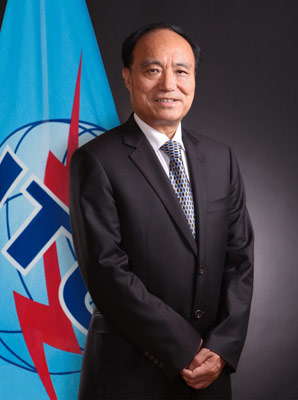December 2022 - You are accessing an archived version of our website. This website is no longer maintained or updated. The Sustainable Development Knowledge Platform has been migrated here: https://sdgs.un.org/
December 2022 - You are accessing an archived version of our website. This website is no longer maintained or updated. The Sustainable Development Knowledge Platform has been migrated here: https://sdgs.un.org/
The theme of the 2017 High-level Political Forum on sustainable development will be “Eradicating poverty and promoting prosperity in a changing world”, which is also a central promise of the 2030 Agenda for Sustainable Development. In the lead-up to the 2017 HLPF, weekly blogs by representatives of Member States, UN system, and major groups and other stakeholders will be featured in this series to present various perspectives on this theme. The role of SDGs 1, 2, 3, 5, 9, 14, and 17 will also be highlighted, as these goals will be in focus at the 2017 HLPF discussions.
Click here to see all the HLPF 2017 blog entries

Houlin Zhao, ITU Secretary-General
Information and communication technologies (ICTs) now form the backbone of today’s digital economy. They also have enormous potential to fast forward progress on the United Nations’ Sustainable Development Goals (SDGs) and improve people’s lives in fundamental ways.
Building the next generation of ICT infrastructure will power the evolution of smart, sustainable cities and communities worldwide. Making modern ICT access more widely available will also foster the local innovation needed to spur domestic economic growth.
As the UN’s specialized agency for ICTs, ITU has a crucial role to play in making sure this critical infrastructure is built in a globally harmonized way that speeds connectivity worldwide – and positions ICTs to accelerate all 17 of the SDGs.
For us, it starts with SDG 9, which is a key focus for ITU as we leverage our core competencies in ICT infrastructure to maximize our unique contribution to the UN’s efforts to achieve the SDGs.
ITU’s mission is to connect the world, and with more than 150 years of experience in harmonizing spectrum, international communication technical standards and policies, ITU is well positioned to help build this ICT foundation for modern development.
As demand for data on wireless devices skyrockets worldwide, ITU’s role in brokering the critical international agreements that guide the cooperative use of radiofrequency spectrum is now more vital than ever. In addition, the globally harmonized technical standards we produce help lower the costs of ICT infrastructure deployment, encouraging the significant investments required for improved connectivity worldwide.
While we still have a long way to go – some 3.9 billion people are still unconnected to the Internet – we have made great strides. For instance, ITU’s G.fast technical standard has emerged as an important “bridge” technology, allowing countries across the world to better connect their citizens to high-speed networks at lower cost using existing copper infrastructure. ITU also provided the older xDSL technical standards that still enable over half of all Internet connections in developing countries.
With ITU’s broad membership base of government, private sector and academia, ITU will be collaborating and cooperating with many other organisations to ensure the transformative impacts of ICTs are maximised.
The UN Broadband Commission for Sustainable Development, ITU’s Connect 2020, the Alliance for Affordable Internet, the Global e-Sustainability Initiative and the Partnership for Sustainable Development Data are just a few examples of existing collaborations that show SDG 17 in action.
ICTs are widely recognised as the cross-cutting transformative potential for all SDGs.
Below are examples of ITU and ICT contributions to the other SDGs that will be reviewed at the HLPF:
The new digital economy, and its increasing reliance on the transformative impact of Big Data, the Internet of Things (IoT) and Artificial Intelligence (AI) is essential to eradicating poverty and promoting sustainable development.
For this reason, ITU will continue to work to connect the unconnected, in partnership with all stakeholders to maximize the impact of ICTs in contributing to the achievement of the SDGs.